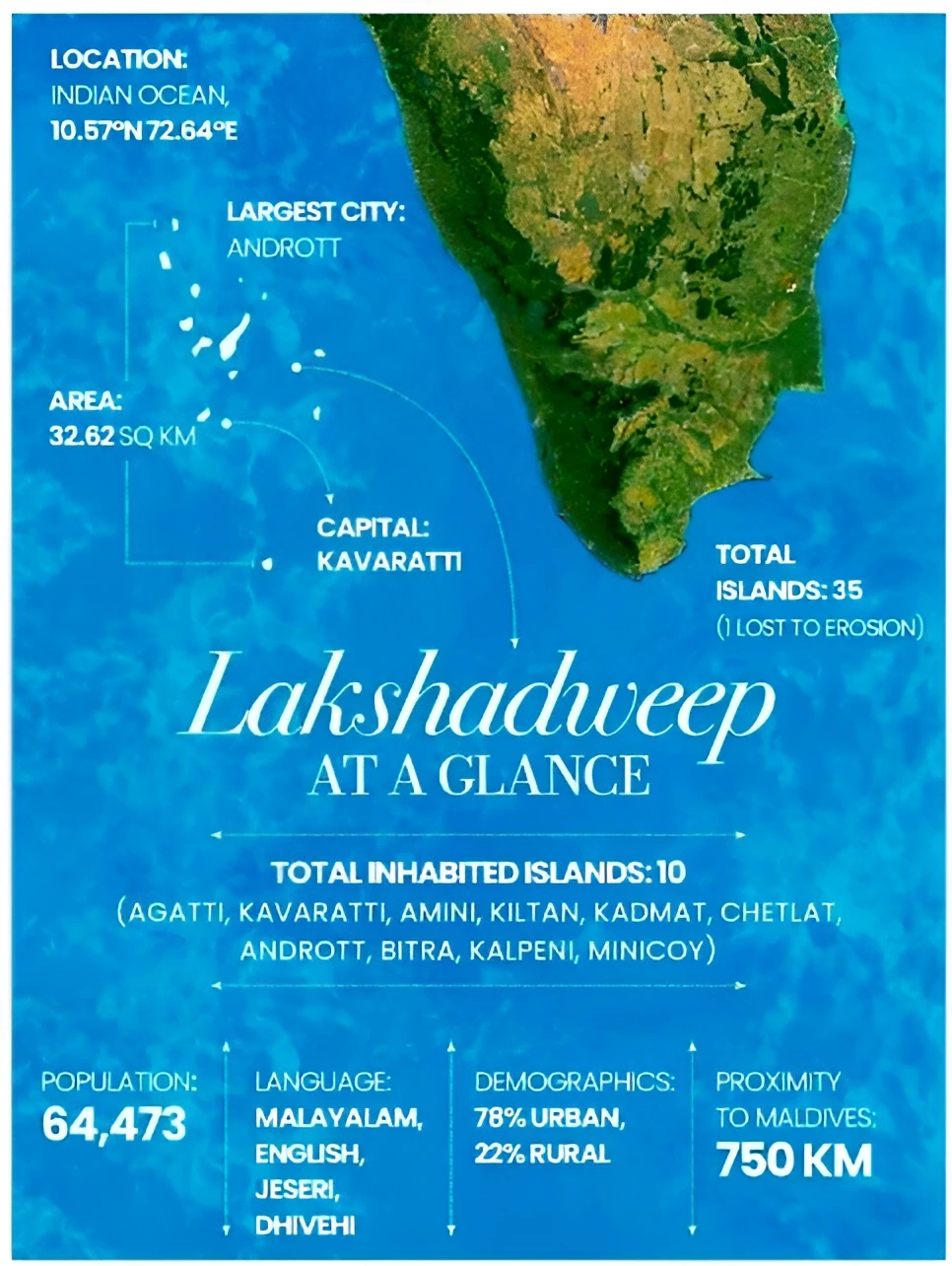Lakshadweep: Navigating Geopolitical Tensions, Unlocking Tourism Potential, and Paving the Way for Sustainable Development in the Arabian Sea.

Context: Recently, the Maldives government faced backlash from Indian citizens for using derogatory words against Indians and the Indian Prime Minister for visiting Lakshadweep.
Indian Tourists Powerhouse: Impact on Maldives’ Economy and Tourism Dominance in 2023
Challenges in Indo-Maldivian Relations: Navigating Anti-Indian Sentiments and Geopolitical Complexities
|
|---|
 Administration: Lakshadweep is a Union Territory having 10 sub-divisions. Kavaratti is the capital of the Union Territory.
Administration: Lakshadweep is a Union Territory having 10 sub-divisions. Kavaratti is the capital of the Union Territory.| Must Read | |
| NCERT Notes For UPSC | UPSC Daily Current Affairs |
| UPSC Blogs | UPSC Daily Editorials |
Lakshadweep is an archipelago of 36 islands located in Arabian Sea, about 440 km away from the coast of Kerala. Lakshadweep islands are the northernmost part of the Lakshadweep–Maldives–Chagos group of islands, which are the exposed tops of a vast undersea mountain range, the Chagos-Lakshadweep Ridge.
The Amindivi group, the Laccadive group and the Minicoy atoll together form Lakshadweep. The 200-km-broad Nine Degree Channel separates Laccadive and Minicoy islands.
Lakshadweep has immense tourism potential due to its similarity with Maldives in terms of climate and geographical features.
Most of the indigenous population is Muslim, belonging to the Shafi school of the Sunni sect. Culturally and ethnically, the inhabitants are similar to Mapillas of Kerala. The Minicoy islands are inhabited by the ethnically distinct Mahl people, who are also the inhabitants of Maldives.
Lakshadweep can serve as a vantage point to monitor any movement of vessels in the Arabian Sea. The nine-degree channel near Lakshadweep is the shortest way for ships connecting West Asia and East Asia.

<div class="new-fform">
</div>